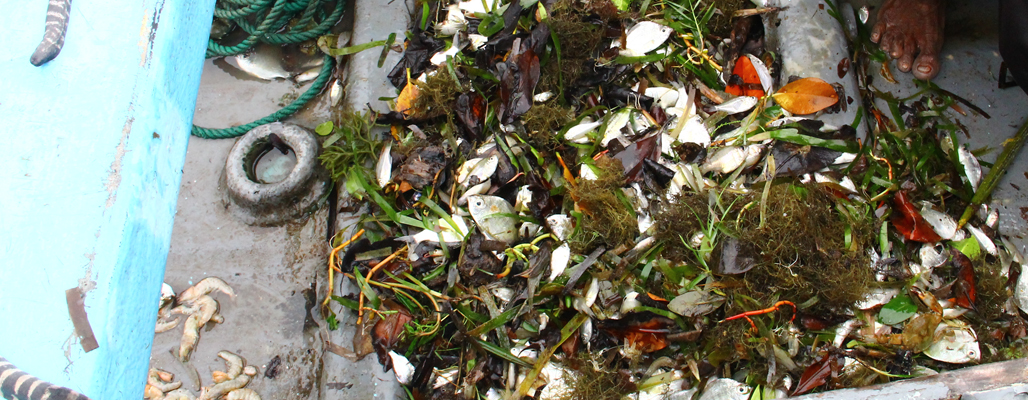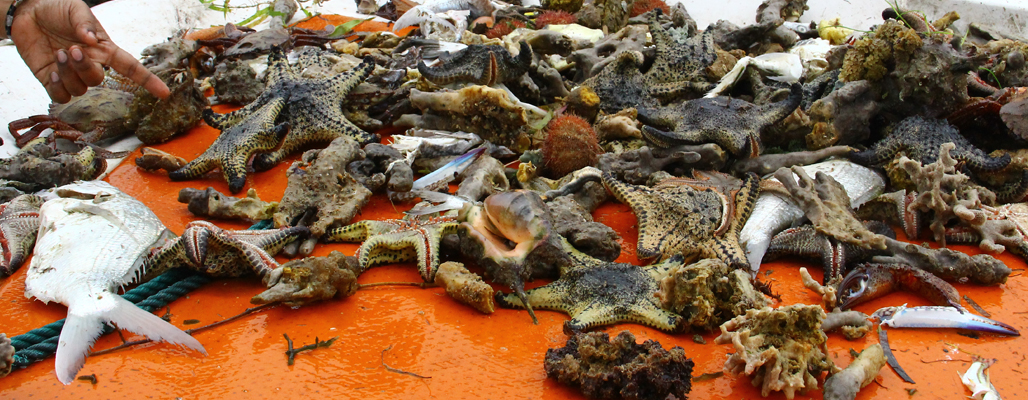

Previous
Next
Dugong dugon, commonly known as "Muhudu Ura" in Sinhala, is one of the most threatened, if not the most threatened species in Sri Lanka.
Numbers have marked a dramatic and alarming decrease in Sri Lankan waters over the last century or so, when large numbers were observed, feeding in herds, especially in the North and North Western shallows of Sri Lanka’s littoral seas.
Historical and fossil evidence indicate a much wider distribution along the coast lines of the Island, even to the deep South of the Country, while records indicate of their predation and consumption by prehistoric humanoids.
Recent scientific surveys have resulted in the location of only a few individuals, though there are credible accounts of a current fishery.
Additionally, through the Dugong Project, the team will be monitoring and gathering data for the Indo-Pacific Finless Porpoise and The Indian Ocean Humpback Dolphin who share the same habitat as the Dugong in Sri Lankan waters.
OBJECTIVE
The study embodies a carefully formulated, structured and scientific action program to create awareness in the relevant community with the objective of the conservation of this critically endangered marine mammal, whereby, the relevant community is induced to make a self-driven effort to ensure its conservation.
Current Status of the Species:
- Numbers – Relative Abundance
- Locality of Occurrence
- Physiological Status – Breeding/Nursing/Young
- Location of Food Sources
- Migratory Patterns if any, for food, breeding, etc.
Identify Threats
- Fishery (traditional)
- Fishery (non-traditional), e.g., Dynamiting, Harpooning
- Accidental – Bycatch/accidents resultant of human activity
- Habitat Destruction via human activity – Destruction of sea grass beds
- Other threats/impacts
Develop Strategies For:
- Mitigating by-catch: change of existing fishery equipment (nets)
- Educating relevant communities of importance/value/benefits
- Create Awareness of “spin-off” benefits to community
- Develop means/sources/lines of dissemination of information to the identified communities.
- Offer of other incentives
Implementation
- Conduct awareness programs for fisher folk on methods of mitigating by- catch; by change of fishing gear and practices – buy back of inappropriate gear/nets or on easy payment/free replacement plan.
- Awareness programs on destructive practices of dynamite fishery – for adults and school children (for long term future beneficial eco-friendly practices.)
- Conduct awareness programs at school level/adult community level on the benefits to the sea grass beds, which are a source of refuge/nursery to the fry of the traditional commercially exploited species, by the presence of Dugongs.
- Establish information centres, verbal/display, print, electronic methodology for delivery of relevant/appropriate information to identified communities.
- Establish protected areas for conservation of Dugongs.
- Create awareness in community of the “spin-off” benefits from such protected areas – guide/ranger, information centre staff, centre naturalist, etc.
- Create awareness on the Marketing Opportunities of other fishery by-products to centre/protected area visitors.
- Prepare information packs for decision makers and governmental officials, for the formulation of appropriate conservation legislation and establishment of protected areas. develop attractive, interest creating information packs for school children and as well as community elders.
- Conduct seminars, workshops, video/film shows to create community interest and awareness.
